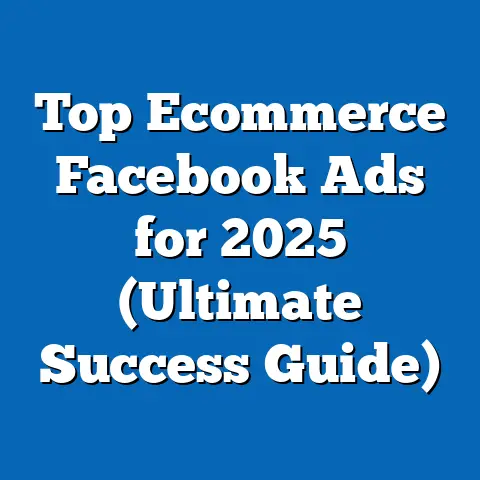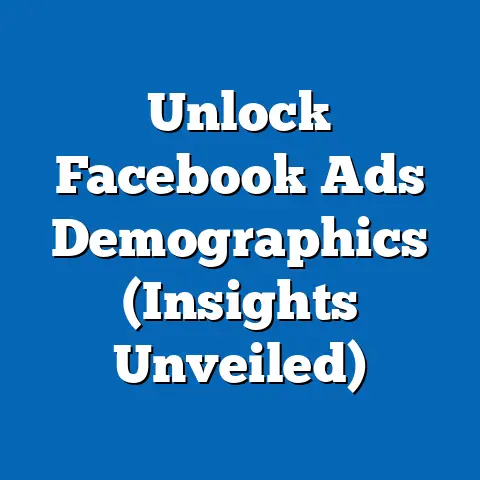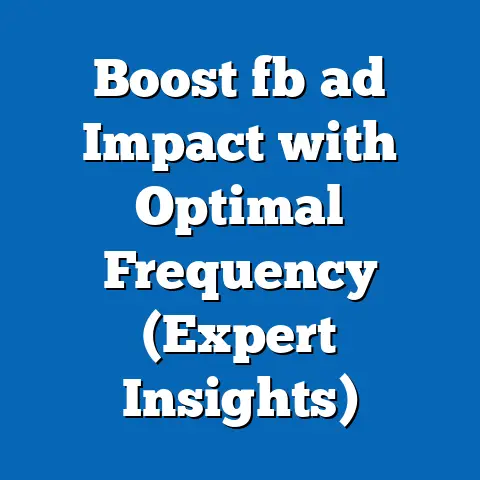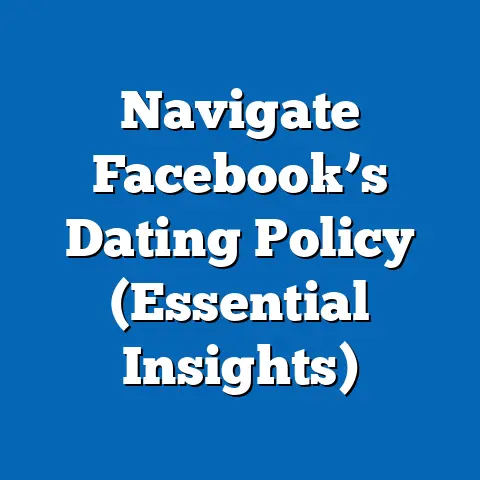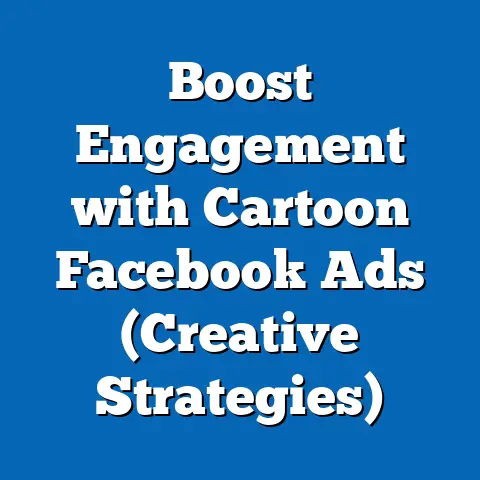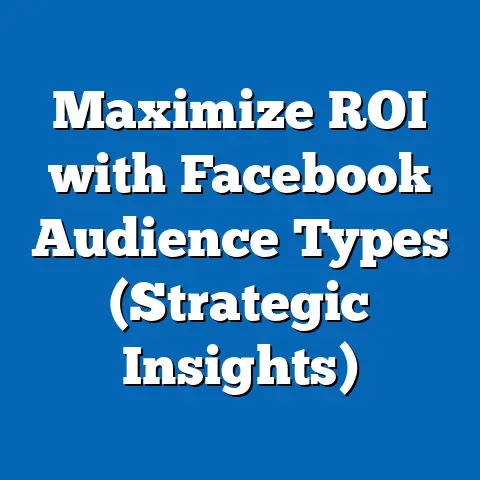Maximize ROI on Facebook Banner Ads (Cost-Saving Strategies)
“Half the money I spend on advertising is wasted; the trouble is I don’t know which half.” – John Wanamaker. In today’s digital landscape, this quote resonates more than ever. While Wanamaker’s sentiment might seem daunting, Facebook advertising offers unprecedented levels of tracking and optimization, allowing us to pinpoint exactly where our ad dollars are going – and how to make them work harder.
Understanding Facebook Banner Ads
Facebook banner ads, though not technically called “banner ads” within the Facebook Ads Manager, encompass a variety of ad formats displayed across the platform. These ads are designed to capture attention and drive specific actions, such as website visits, purchases, or lead generation. These are essentially the image or video ads that appear in various placements.
Think of them as the modern evolution of traditional banner ads, but with the added power of Facebook’s sophisticated targeting capabilities.
Why are they significant?
- Reach: Facebook boasts billions of active users, making it a prime platform for reaching a diverse audience.
- Targeting: Facebook’s granular targeting options allow you to pinpoint specific demographics, interests, and behaviors, ensuring your ads reach the most relevant users.
- Versatility: From image ads to video ads, Facebook offers a range of banner ad formats to suit different marketing objectives.
- Trackability: Facebook Ads Manager provides detailed analytics, enabling you to track ad performance and optimize your campaigns for maximum ROI.
Types of Facebook Ads (Banner Ads Included)
- Image Ads: These are single-image ads that appear in the news feed, right column, and other placements. They’re simple, effective, and ideal for showcasing products or services.
- Video Ads: Video ads capture attention and deliver engaging stories. They can be used to demonstrate product features, share testimonials, or build brand awareness.
- Carousel Ads: Carousel ads display multiple images or videos in a scrollable format. They’re perfect for showcasing a range of products or highlighting different aspects of a single offering.
- Collection Ads: Collection ads feature a primary video or image with a selection of products below. They’re designed to create a visually immersive shopping experience.
- Instant Experience Ads: Formerly known as Canvas Ads, these mobile-optimized ads load instantly and offer interactive experiences, such as product catalogs or interactive games.
Facebook Ad Performance and ROI Statistics
- Average Click-Through Rate (CTR): According to recent industry reports, the average CTR for Facebook ads is around 0.9%. However, this varies significantly depending on the industry, ad format, and targeting.
- Average Cost Per Click (CPC): The average CPC for Facebook ads ranges from $0.50 to $2.00, depending on the factors mentioned above.
- Average Conversion Rate: The average conversion rate for Facebook ads is around 9.21%.
- ROI: While ROI varies widely, successful Facebook ad campaigns can generate returns of 5x or more.
Takeaway: Facebook banner ads offer a powerful way to reach your target audience, but success depends on understanding the different ad formats, leveraging Facebook’s targeting capabilities, and continuously optimizing your campaigns for maximum ROI.
The Importance of ROI in Advertising
Return on Investment (ROI) is the holy grail of advertising. Simply put, it measures the profitability of your advertising efforts. It’s calculated as:
(Revenue Generated – Advertising Cost) / Advertising Cost x 100
For example, if you spend $1,000 on Facebook ads and generate $5,000 in revenue, your ROI is 400%.
Why is maximizing ROI crucial?
- Cost-Effectiveness: High ROI means you’re getting the most bang for your buck. You’re generating more revenue for every dollar you spend on advertising. I’ve seen businesses struggling to stay afloat turn things around simply by focusing on ROI optimization.
- Budget Management: Understanding your ROI allows you to allocate your advertising budget more effectively. You can invest more in campaigns that are generating high returns and scale back on those that are underperforming.
- Strategic Decision-Making: ROI provides valuable insights into the effectiveness of your marketing strategies. It helps you identify what’s working and what’s not, allowing you to make data-driven decisions to improve your overall marketing performance.
- Business Growth: Ultimately, maximizing ROI drives business growth. By generating more revenue with your advertising efforts, you can reinvest in your business, expand your operations, and achieve your financial goals.
How High ROI Influences Overall Marketing Strategies
A high ROI from Facebook banner ads can have a ripple effect on your overall marketing strategy:
- Increased Confidence: When you see positive results from your Facebook ads, it builds confidence in your marketing efforts and encourages you to explore new strategies and tactics.
- Resource Allocation: A high ROI justifies allocating more resources to Facebook advertising, allowing you to scale your campaigns and reach a wider audience.
- Integration with Other Channels: A successful Facebook ad campaign can be integrated with other marketing channels, such as email marketing or content marketing, to create a cohesive and effective marketing strategy.
- Improved Brand Awareness: High ROI campaigns often lead to increased brand awareness, which can benefit your business in the long run.
Takeaway: ROI is the ultimate measure of advertising success. By focusing on maximizing ROI, you can ensure that your Facebook banner ads are generating the best possible results for your business.
Cost-Saving Strategies for Facebook Banner Ads
Now, let’s get into the nitty-gritty of how to save money and boost your ROI on Facebook banner ads. Over the years, I’ve implemented these strategies across various campaigns, each time learning something new and refining my approach.
Targeting the Right Audience
This is where the magic happens. Imagine shouting your message into a crowded stadium versus whispering it to the perfect person. Which is more effective?
Why is audience targeting so important?
- Reduced Costs: Targeting the right audience reduces wasted ad spend. You’re not paying to show your ads to people who are unlikely to be interested in your products or services.
- Increased Conversions: When you target the right audience, your ads are more likely to resonate with them, leading to higher click-through rates and conversion rates. I’ve seen conversion rates jump by as much as 50% simply by refining the audience targeting.
- Improved Ad Relevance: Facebook rewards ads that are relevant to the audience. Relevant ads receive higher quality scores, which can lower your ad costs and improve your ad delivery.
Using Facebook’s Audience Insights Tool
Facebook’s Audience Insights tool is your secret weapon for identifying your target demographics.
- Access the Tool: Navigate to Facebook Ads Manager and select “Audience Insights” from the menu.
- Choose Your Audience: You can choose to analyze everyone on Facebook or people connected to your page.
- Explore Demographics: Dive into demographics such as age, gender, location, education, and relationship status. This helps you understand the basic characteristics of your target audience.
- Analyze Interests: Explore the interests and hobbies of your target audience. This helps you understand what they’re passionate about and what they’re likely to be interested in.
- Review Page Likes: See what pages your target audience likes. This provides valuable insights into their preferences and the brands they engage with.
- Analyze Location Data: Understand where your target audience lives and travels. This helps you tailor your ads to specific geographic locations.
- Save Your Audience: Once you’ve identified your target demographics, interests, and behaviors, save your audience for future ad campaigns.
Creating Custom and Lookalike Audiences
- Custom Audiences: These are audiences you create based on your existing customer data, such as email lists, website visitors, or app users. I once uploaded a customer email list for a small e-commerce store and saw a 30% increase in sales within the first week.
- Lookalike Audiences: These are audiences that Facebook creates based on your custom audiences. Facebook identifies users who share similar characteristics and behaviors with your existing customers.
Tips for Creating Effective Audiences
- Start with a broad audience: Then narrow it down based on your data and insights.
- Test different audiences: To see which ones perform best.
- Use layering: Combining different targeting options to create highly specific audiences.
- Exclude audiences: That are unlikely to convert.
- Regularly update your audiences: To ensure they remain relevant.
Takeaway: Precise audience targeting is the foundation of cost-effective Facebook advertising. By leveraging Facebook’s Audience Insights tool and creating custom and lookalike audiences, you can ensure that your ads are reaching the right people, reducing wasted ad spend, and maximizing your ROI.
Ad Creative Optimization
Your ad creative is the face of your campaign. It’s what captures attention, conveys your message, and drives action. A poorly designed ad can be a money pit, while a well-crafted ad can be a goldmine.
Elements of Effective Banner Ad Design
- Visuals: Use high-quality images or videos that are relevant to your product or service.
- Copy: Write clear, concise, and compelling copy that highlights the benefits of your offering.
- Call-to-Action (CTA): Include a strong CTA that tells people what you want them to do (e.g., “Shop Now,” “Learn More,” “Sign Up”).
- Relevance: Ensure your ad creative is relevant to your target audience and their interests.
- Branding: Incorporate your brand elements, such as your logo and colors, to build brand awareness.
A/B Testing Different Creatives
A/B testing, also known as split testing, is the process of testing different versions of your ad creative to see which one performs best.
- Create Multiple Versions: Create two or more versions of your ad creative with slight variations in the visuals, copy, or CTA.
- Run Your Ads: Run your ads simultaneously, targeting the same audience.
- Track Performance: Track the performance of each ad creative, focusing on metrics such as click-through rate, conversion rate, and cost per conversion.
- Identify the Winner: After a sufficient period of testing, identify the ad creative that performed best.
- Implement the Winner: Use the winning ad creative in your ongoing campaigns.
- Repeat the Process: Continuously A/B test your ad creatives to optimize your performance over time.
Examples of Successful Banner Ads
- Dollar Shave Club: Their ads use humor and simplicity to highlight their value proposition.
- Airbnb: Their ads feature stunning visuals of unique travel destinations.
- Nike: Their ads inspire action and promote their brand values.
- Spotify: Their ads offer personalized music recommendations.
What Makes These Ads Effective?
- Clear Value Proposition: They clearly communicate the benefits of their products or services.
- Compelling Visuals: They use high-quality images or videos that capture attention.
- Strong CTAs: They tell people what they want them to do.
- Relevance: They are relevant to their target audience and their interests.
- Branding: They incorporate their brand elements to build brand awareness.
Takeaway: Ad creative optimization is essential for maximizing ROI. By using high-quality visuals, writing compelling copy, including strong CTAs, and A/B testing different creatives, you can create ads that capture attention, drive engagement, and generate conversions.
Utilizing Facebook Ad Budgeting Tools
Facebook offers a range of budgeting tools to help you control your ad spend and maximize your ROI.
Different Budgeting Options
- Daily Budget: This is the average amount you’re willing to spend on your ads each day.
- Lifetime Budget: This is the total amount you’re willing to spend on your ads over the entire duration of the campaign. I often use lifetime budgets for campaigns with a specific end date, like a product launch or a seasonal promotion.
Advantages of Setting a Maximum Bid
- Control Over Costs: Setting a maximum bid ensures that you don’t overpay for ad impressions or clicks.
- Improved ROI: By controlling your costs, you can improve your ROI.
- Competitive Advantage: Setting a maximum bid allows you to stay competitive in the ad auction without breaking the bank.
Facebook’s Automatic Bidding Options
- Lowest Cost: Facebook will automatically bid to get you the lowest possible cost per result.
- Cost Cap: You set a target cost per result, and Facebook will try to achieve that cost while maximizing the number of results.
- Target Cost: Facebook will try to get you the most results while staying as close as possible to your target cost.
- Bid Cap: You set a maximum bid for each auction, giving you more control over your spending.
Optimizing Ad Spend Through Budget Allocation Strategies
- Prioritize High-Performing Campaigns: Allocate more budget to campaigns that are generating high returns.
- Scale Successful Campaigns: Gradually increase the budget of successful campaigns to reach a wider audience.
- Cut Losses: Reduce or eliminate the budget of underperforming campaigns.
- Test New Strategies: Allocate a small portion of your budget to test new strategies and tactics.
Takeaway: Facebook’s budgeting tools provide the control and flexibility you need to manage your ad spend effectively. By understanding the different budgeting options, setting a maximum bid, utilizing Facebook’s automatic bidding options, and optimizing your budget allocation strategies, you can maximize your ROI and achieve your advertising goals.
Scheduling and Timing
Timing is everything, especially when it comes to advertising. Running your ads at the right time can significantly impact your ROI.
Impact of Ad Scheduling on ROI
- Increased Visibility: Running your ads when your target audience is most active on Facebook increases your visibility.
- Improved Engagement: When your ads are seen by the right people at the right time, they’re more likely to engage with them.
- Higher Conversion Rates: Increased visibility and improved engagement lead to higher conversion rates.
- Reduced Costs: By running your ads at optimal times, you can reduce your ad costs and improve your ROI.
Best Times to Run Ads
- Weekdays vs. Weekends: Depending on your target audience and industry, weekdays or weekends may be more effective.
- Morning vs. Evening: Consider when your target audience is most likely to be online and receptive to your message.
- Specific Time Slots: Test different time slots to see which ones generate the best results.
Using Facebook’s Ad Scheduling Features
- Navigate to Facebook Ads Manager: And select your campaign.
- Edit Your Ad Set: Go to the “Ad Set” level and click “Edit.”
- Scroll Down to “Budget & Schedule”: And select “Run ads on a schedule.”
- Customize Your Schedule: Choose the days and times you want your ads to run.
- Save Your Changes: And your ads will run according to your schedule.
Case Studies and Examples
- E-commerce Store: An e-commerce store selling clothing found that their ads performed best on weekends, when people had more time to browse and shop.
- Restaurant: A restaurant found that their ads performed best during lunch and dinner hours, when people were thinking about food.
- Software Company: A software company found that their ads performed best during business hours, when people were at work and more likely to be using their computers.
Takeaway: Ad scheduling is a powerful tool for maximizing ROI. By understanding the impact of ad scheduling, identifying the best times to run your ads, and using Facebook’s ad scheduling features, you can ensure that your ads are seen by the right people at the right time, leading to increased engagement and higher conversion rates.
Monitoring and Analyzing Performance
You can’t improve what you don’t measure. Monitoring and analyzing your ad performance is crucial for identifying areas for improvement and optimizing your campaigns for maximum ROI.
Importance of Tracking Key Performance Indicators (KPIs)
- Understanding Performance: KPIs provide insights into how your ads are performing.
- Identifying Trends: Tracking KPIs over time helps you identify trends and patterns.
- Making Data-Driven Decisions: KPIs provide the data you need to make informed decisions about your campaigns.
- Optimizing for ROI: By tracking KPIs and making data-driven decisions, you can optimize your campaigns for maximum ROI.
Using Facebook Ads Manager to Analyze Ad Performance
- Overview: The overview section provides a high-level summary of your ad performance.
- Campaigns: The campaigns section allows you to analyze the performance of individual campaigns.
- Ad Sets: The ad sets section allows you to analyze the performance of individual ad sets.
- Ads: The ads section allows you to analyze the performance of individual ads.
Common Pitfalls to Avoid
- Ignoring the Data: Failing to track and analyze your ad performance.
- Making Assumptions: Making decisions based on gut feelings rather than data.
- Focusing on Vanity Metrics: Such as likes and shares, rather than metrics that drive business results.
- Not Testing: Failing to A/B test different ad creatives and targeting options.
- Not Optimizing: Failing to make changes to your campaigns based on your performance data.
Takeaway: Monitoring and analyzing your ad performance is essential for maximizing ROI. By tracking KPIs, using Facebook Ads Manager to analyze your performance, and avoiding common pitfalls, you can make data-driven decisions that improve your ad performance and drive business results.
Retargeting Strategies
Retargeting is like giving your potential customers a gentle nudge. It involves showing ads to people who have previously interacted with your website, app, or Facebook page.
How Retargeting Leads to Higher ROI
- Increased Brand Recall: Retargeting helps keep your brand top of mind for potential customers.
- Improved Conversion Rates: People who have previously interacted with your brand are more likely to convert.
- Personalized Messaging: Retargeting allows you to deliver personalized messages based on people’s past interactions with your brand.
- Cost-Effective: Retargeting can be more cost-effective than traditional advertising because you’re targeting people who are already interested in your products or services.
Setting Up Retargeting Campaigns
- Install the Facebook Pixel: On your website to track visitor behavior.
- Create Custom Audiences: Based on website visitors, app users, or Facebook page engagers.
- Design Personalized Ads: That address the specific needs and interests of your retargeting audience.
- Run Your Retargeting Campaign: Targeting your custom audiences.
- Monitor and Optimize: Your campaign for maximum ROI.
Importance of Segmenting Audiences for Retargeting
- Website Visitors: Show ads to people who have visited specific pages on your website.
- Cart Abandoners: Show ads to people who have added items to their cart but haven’t completed the purchase.
- Past Customers: Show ads to people who have previously purchased your products or services.
- Facebook Page Engagers: Show ads to people who have liked, commented on, or shared your Facebook posts.
Takeaway: Retargeting is a powerful strategy for maximizing ROI. By setting up retargeting campaigns, designing personalized ads, and segmenting your audiences, you can re-engage potential customers, improve conversion rates, and drive business results.
Leveraging User-Generated Content (UGC)
User-Generated Content (UGC) is any content created by your customers or fans, such as reviews, testimonials, photos, or videos. It’s a goldmine of authentic and engaging content that can be used in your Facebook banner ads.
How UGC Builds Trust and Authenticity
- Social Proof: UGC provides social proof that your products or services are valuable and trustworthy.
- Authenticity: UGC is more authentic and relatable than traditional advertising.
- Increased Engagement: UGC is more likely to capture attention and drive engagement.
- Cost-Effective: UGC is often free or low-cost, making it a cost-effective way to create compelling ad creative.
Examples of Brands Using UGC Successfully
- GoPro: Uses customer-submitted photos and videos to showcase the capabilities of their cameras.
- Starbucks: Encourages customers to share photos of their drinks using the hashtag #Starbucks.
- Airbnb: Features photos of unique travel destinations taken by their hosts and guests.
- Lululemon: Showcases photos of their customers wearing their apparel in various activities.
Encouraging Customers to Create Content
- Run Contests and Giveaways: Encourage customers to submit photos or videos for a chance to win prizes.
- Create a Hashtag: Encourage customers to use your branded hashtag when sharing content related to your brand.
- Feature Customer Content: On your website and social media channels to incentivize others to create content.
- Ask for Reviews and Testimonials: Encourage customers to leave reviews and testimonials on your website and social media channels.
Takeaway: User-Generated Content (UGC) is a powerful asset for maximizing ROI. By leveraging UGC in your Facebook banner ads, you can build trust, authenticity, and engagement, leading to increased conversions and business results.
Conclusion
Maximizing ROI on Facebook banner ads is an ongoing process that requires a combination of strategic planning, creative optimization, and data-driven decision-making. By implementing the cost-saving strategies outlined in this guide, you can cut costs, improve ad performance, and drive business results.
Remember, the key is to continuously test, monitor, and optimize your campaigns to ensure that you’re getting the most bang for your buck. Don’t be afraid to experiment with different targeting options, ad creatives, and bidding strategies.
And most importantly, always focus on providing value to your target audience. When you create ads that are relevant, engaging, and helpful, you’re more likely to capture their attention, build trust, and drive conversions.
Call to Action
Ready to take your Facebook banner ads to the next level? Start implementing these cost-saving strategies today and see the difference they can make in your ROI.
Share your success stories or questions in the comments section below. I’m here to help you navigate the ever-changing world of Facebook advertising and achieve your business goals. Let’s get started!

